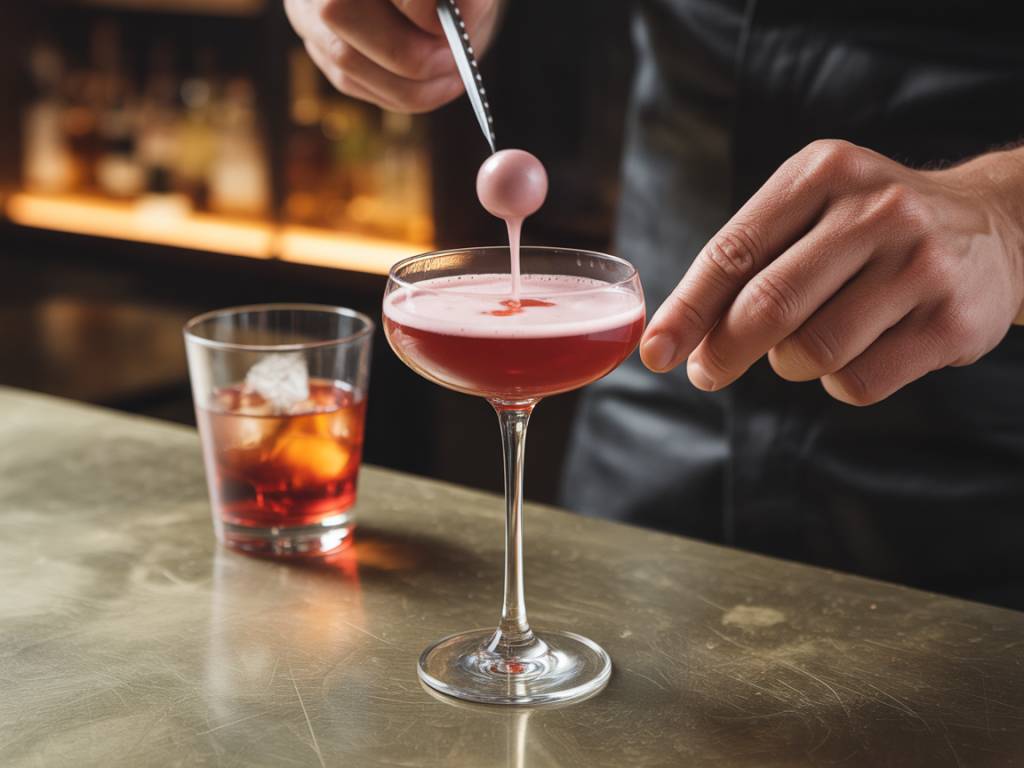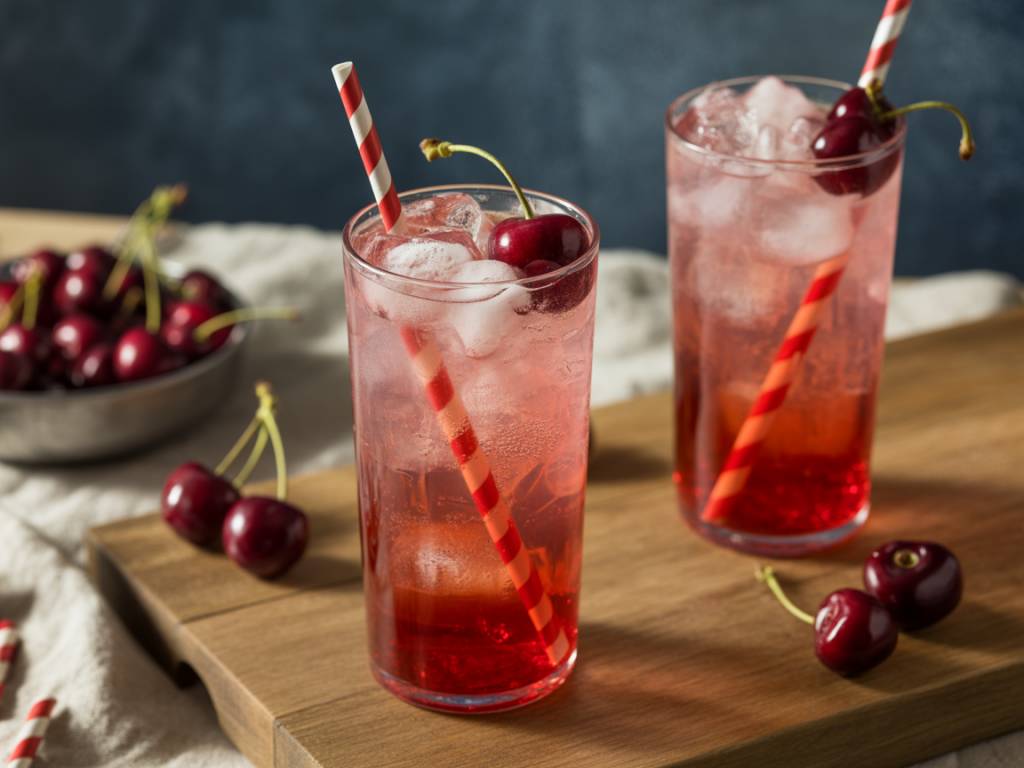The Curious Legacy of Jamaica Ginger: From Medicinal Tonic to Mixologist’s Secret
It’s not every day a once-obscure medical tonic reclaims the limelight in high-end cocktail bars. But “Jamaica Ginger,” or “Jake” as it was colloquially known in early 20th-century America, is staging a quiet yet meaningful comeback. While it’s unlikely you’ll find its original medicinal version behind the counter today, modern mixologists are rediscovering and reinventing its deeply aromatic, spicy notes for a new generation of adventurous sippers.
What is the story behind Jamaica Ginger, and why does it matter? And more importantly—why should those of us in Georgia, or anyone with a curiosity for flavor and history, care about its recent revival? Let’s connect the dots.
A Fiery Start: The Origins of Jamaica Ginger
Jamaica Ginger traces its roots to the 19th century as a medical tonic marketed for digestive health. Produced primarily with ginger root distilled into an alcohol base, it became widely available in pharmacies across the United States and Britain. Its high alcohol content—usually around 70%—made it especially popular during Prohibition. A daily spoonful may have soothed stomach pains, but for many, it also doubled as a legal (if thinly veiled) way to access liquor.
Ginger itself has always played a vital role in herbal medicine, revered in many cultures, including in Georgia’s local households, where “ingveri” (ginger) teas and tinctures remain common natural remedies. Yet Jamaica Ginger’s trajectory took a darker turn when, during Prohibition-era America, unscrupulous manufacturers began adding toxic compounds to skirt regulations. The infamous “Jake Leg” paralysis scandal of the 1930s tainted its reputation—and led to the product’s eventual disappearance from shelves.
Today, renewed interest in heritage ingredients and forgotten flavors has brought Jamaica Ginger back—not as a medicinal elixir, but as a cocktail enhancer worthy of its complex past.
The Resurgence: From Bootleg Tonic to Bar Top Star
What makes Jamaica Ginger so compelling to today’s bartenders and chefs? The answer lies in its flavor profile: intense, peppery, and capable of bridging the gap between sweet and sharp. In a cocktail landscape where botanical gins and artisanal bitters dominate, ginger offers a bold yet flexible foundation.
Several high-profile bars in London, New York, and more recently Tbilisi, have begun to experiment with updated versions of historical Jamaican Ginger syrups and tinctures. Although modern renditions don’t carry the 70% alcohol punch, they make up for it with concentrated flavor and versatility.
In the Old Tbilisi district, for instance, a handful of craft bars have introduced “Jamaica Ginger-inspired” drinks that combine reduced ginger infusions with local spirits such as chacha. Others add a Georgian twist, pairing it with seasonal ingredients like tarragon, blackberries, or sour cherries.
Ingredients with a Backstory: Why It Matters for Georgian Consumers
The return of Jamaica Ginger aligns with a broader, global interest in provenance and storytelling in food and drink culture. For Georgia, a country with a rich legacy of artisanal wine, herbal tinctures, and culinary traditions rooted in natural remedies, the re-discovery of such ingredients resonates deeply.
Local mixologists are increasingly looking beyond mainstream trends to incorporate globally historical ingredients with local relevance. And shoppers and patrons, in turn, are eager to engage with what’s in their glass—beyond just the taste.
Why does this matter? Because transparency and craftsmanship matter. When an ingredient like Jamaica Ginger returns to public consciousness, it’s not just for nostalgia. It’s often for its quality, its uniqueness, and the way it complements or challenges familiar flavors. Georgian consumers, increasingly well-informed and discerning, are well-positioned to appreciate that.
Ginger in Georgian Daily Life: Not Just for Cocktails
Interestingly, ginger occupies a prominent place in many Georgian households—not in cocktails, but in teas, home remedies, and even desserts. It’s frequently combined with lemon and honey as a cure for colds, and appears in sauces and marinades for both meat and vegetarian dishes.
When bars and restaurants in Tbilisi experiment with Jamaica Ginger, they’re not so much introducing a foreign concept as they are reimagining a familiar one in an elevated context. That’s also what makes this trend feel organic rather than forced: it fits within existing patterns of consumption, just with a creative twist.
Instead of drinking a warm glass of “ingveri tsai” before bed, imagine finding a smoky ginger-laced old fashioned spiked with chacha, or a modern mule that uses a homemade Jamaica Ginger syrup to enhance complexity.
How Bartenders Are Using It Today
The modern bartender treats Jamaica Ginger not as a novelty but as a tool. Think of it the way chefs use aged balsamic vinegar or fermented black garlic—carefully and purposefully, to add depth and nuance.
Here are a few common ways bars are incorporating Jamaica Ginger formulations today:
- Infused Syrups: Combining ginger root, sugar, and neutral grain spirits to create shelf-stable, concentrated spiced syrups for stirrers and sours alike.
- Tinctures: Tiny drops added to cocktails offer heat and aroma without overwhelming other ingredients.
- Bitters Compounds: Integrated with herbs, citrus zest, and chili for use in low-ABV drinks or no-alcohol alternatives.
- Culinary Pairings: Used in sauces and reductions for cocktail-paired appetizers or desserts, such as spicy caramel glacé or charcuterie dips with ginger aromatics.
One standout example is the “Ginger Revival,” a cocktail recently spotted at a Tbilisi speakeasy near Freedom Square. It blends dry vermouth, chacha, a few dashes of homemade Jamaica Ginger tincture, and a squeeze of tangerine peel. Clean, sharp, and daring—it’s a drink that wouldn’t have existed five years ago, and certainly not with an old pharmacy extract as star ingredient.
Where to Find and How to Use It at Home
For interested consumers, Jamaica Ginger-inspired products are slowly appearing in specialty shops across Georgia and through online retailers. If you’re handy in the kitchen, making a simplified version at home is possible with just a few staples: fresh ginger, sugar or honey, water, and (optionally) a bit of high-proof spirit such as vodka or artisanal chacha to preserve it longer.
Use your syrup to elevate:
- Homemade lemonades or iced teas
- Warm toddies with black tea, citrus, and honey
- Glazes or marinades for grilled meat
- Cocktails like Moscow Mules (with a Georgian twist)
- Over desserts like ice cream or baked pears
The goal isn’t to resurrect the Jamaica Ginger of old with all of its historical baggage, but to reinterpret its core—spice, warmth, and intrigue—for today’s flavor-forward landscape.
From Vintage to Vibrant: What This Trend Tells Us
Jamaica Ginger’s resurgence is less about nostalgia and more about a renewed curiosity for depth and authenticity. In a world increasingly dominated by the artificial and prepackaged, flavor anchors that have stood the test of time—both globally and locally—act as bridges to tradition and taste.
For Georgia and its informed audience, the return of Jamaica Ginger is about more than just mixing drinks. It’s about rediscovering the roots of what we consume and considering how innovation and heritage can flavor our future—one sip at a time.



